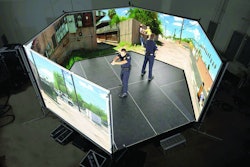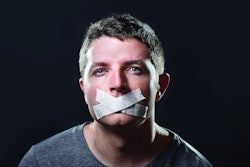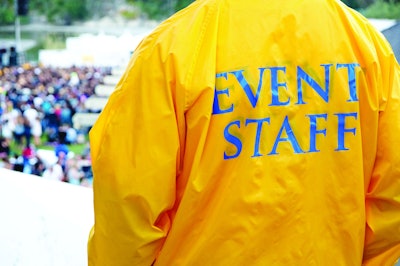 Photo: Getty Images
Photo: Getty Images
In a world where mass shootings and copycat events prevail, music festival organizers, public officials, and law enforcement are currently grappling with how they might better protect event venues from mass killers.
But the reality—as the recent Las Vegas shooting at a Jason Aldean concert proved—is that no amount of planning and preparation is guaranteed to stop every lone wolf shooter.
In Vegas, Stephen Paddock executed an unprecedented attack—he opened fire on a country music festival from the 32nd floor of the Mandalay Bay Resort and Casino, leaving 58 people dead, and wounding and injuring an estimated 546 more.
Attorney Steven Adelman, who focuses on event security, says it's impossible to plan for an emergency that has never happened before. "There is no previous shooting like this one. It is literally unprecedented in the world of live events," he says. "You would have to go back to 1963, with Lee Harvey Oswald up in the Dallas book depository, to get the nearest analogy to the Las Vegas shooting. There is no way that anyone could have planned for this—not the hotel, not the concert venue—because this has never happened before. No one plans for things that have never happened before. There is nothing before this event that would have clued in organizers of an outdoor festival that they should plan for a shooter across an enormously wide intersection, 32 stories up."
Acts One, Two, and Three
Adelman dissects the event by likening it to a three-act play involving security, the venue, and the shooter himself.
Act One: The venue, in this case the Route 91 Festival property. "There is really no security enhancement that would have reduced the likelihood of people getting shot from across the strip because the shooter never came onto the concert property at all," he says. "He didn't even approach the security perimeter."
He explains this event vastly differs from the Pulse nightclub shooting in Orlando, FL, where Omar Mateen, a 29-year-old security guard, killed 49 people and wounded 58 others. "In this incident, the shooters shot their way into the club," he says. "But in Las Vegas, that didn't happen at all, so the thing venue operators and promoters pay close attention to, which is the venue security perimeter, was never challenged; it was never even approached."
Act Two: The shooter's location, in this case the Mandalay Bay Resort and Casino. There are those who believe that if the hotel had had better security, its security officials might have been able to identify the shooter before he did anything. "He would have been identified, they say, as not just one of thousands of people going in and out of the venue, but as someone who was setting up to commit a crime," he says.
However, Adelman points out that the subsequent investigation of this event has shown that Paddock took extreme measures to "make himself innocuous and disappear into the crowd."
Greg Pearson, CEO of global risk consulting firm FocusPoint International, suggests in a Vice.com article that advanced technology could help concert security teams respond more quickly to an active shooter situation. He put forth that gunfire detection systems could have stopped the shooting in its tracks, while other experts suggested facial recognition systems might have identified Paddock as a threat long before he did anything.
"Yeah, maybe facial recognition software or some other wonderful bit of technology could identify someone [as a threat], but only if that person was already in the system," says Adelman. "This shooter wasn't. He wasn't in anyone's system. He wasn't on anyone's radar; not prior to him starting to rent hotel rooms near concert venues and not during the time he was getting set up on the 32nd floor of Mandalay Bay."
Adelman adds, "This guy intended to fly below the radar, was a very careful planner, and successfully executed his plan to remain below the radar. There is nothing the hotel could have done to identify this guy because he looked, acted, and carried things just like everyone else. There was simply no reason for a security professional to come up to him and question him about what he was doing or what he was carrying.
"The major hotels on the Las Vegas strip set the gold standard for hotel security; they do security better than virtually anywhere else," he continues. "So, as we can see, if someone is intent on passing beneath the radar of extraordinary security, they can do so."
Act Three: The shooter, in this case, Paddock. Adelman says the question to ask is what turns a person, someone who looks ordinary and acts unobtrusively, into a shooter? There are no clear answers.
Adelman believes there is very little chance of a copycat following in Paddock's footsteps. "I'm convinced that a copycat shooter is unlikely because this took a lot of work, a lot of time, a lot of planning, and a lot of flying under the radar to execute," he says. "That's not a likely combination to reoccur." 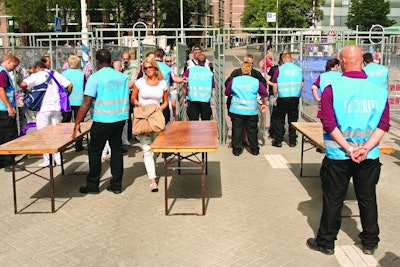 For the most part, the security measures that are already put in place for major events should remain unchanged. But event organizers should know how to react if an attack occurs. Photo: Getty Images
For the most part, the security measures that are already put in place for major events should remain unchanged. But event organizers should know how to react if an attack occurs. Photo: Getty Images
Because of this, Adelman says, "Though this was the worst mass shooting incident in U.S. history, it would be a mistake to radically change the resource allocation and emergency action plans that are already in place to prevent a future incident like this."
Back to Basics
The question becomes then: What are the reasonably foreseeable threats that people should be paying attention to? To this Adelman answers, "The same stuff as before the Route 91 festival shooting."
When planning security for any event, there needs to be a site-specific analysis based on geographic risks. What are the risks inherent at the event in question?
"One risk is the crowd demographics," says Adelman. In a sporting event, for example, if there is a strong rivalry between two teams, police can make a reasonably confident assessment about the makeup of the crowd and the behaviors they might
expect.
"Not to engage in gross stereotyping, but these are useful rules of thumb," says Adelman. "If it's a country music show, your primary food and beverage concern is alcohol, and people getting drunk, unruly, engaging in fist fights, and driving under the influence after the event. But at an electronic dance festival, there might be much more worry about illicit drugs, so you might need to plan more for medical intervention in case of an overdose. Or, for example, when the San Francisco 49ers play the Arizona Cardinals, we know there's an unusual number of fights between the fans of these two teams, so event security needs to plan for that."
He adds, "These are the sorts of risk assessments that event planners and law enforcement have always done, and they should remain the risk assessments that are done now."
Perimeter security is another area worthy of consideration. Event patrons now expect to have their bags checked before entering a venue, if they are even allowed to carry a bag in. They know that they will be wanded or asked to walk through a magnetometer for screening. "I think most people shrug these things off as the cost of living in the public in 2017," Adelman says. "These basic protections of an event perimeter should not change because of the Las Vegas shooting; the security perimeter in this case was not breached."
News reports suggest that this event could lead pre-event surveillance sweeps, hiring more off-duty undercover police officers to surveil event venues, and even taking over floors of the facility for security purposes. "The costs of this would be enormous," Jason Porter, eastern region vice president for global private security firm Pinkerton, told Vice.com.
Adelman agrees, saying, "I've heard talk about how every outdoor show should do reconnaissance of tall buildings near the festival grounds so there isn't a shooter with a good line of sight. Now that we know the threat, we would be foolish not to pay attention to it, but I don't think it's going to be a profitable line of investigation most of the time."
He explains that at a large outdoor event that takes place across from a hospital, for example, completely locking down security is difficult at best. "The organizers of the event do not control the hospital, nor the occupants inside. It's unlikely that they are going to be able to do much in terms of security there," Adelman says. And the event may be held near "taller structures where conceivably someone could get in with weapons. Controlling that would be beyond the control of the ownership group and event organizers, and that is usually going to be the scenario. One controls their own property, not adjacent properties."
News reports also called for putting snipers on the tops of taller buildings to take out a shooter if need be.
"I'm a realist," says Adelman. "I don't think it's practical for most event organizers to consider these things. There are lots of big ideas going around, and none of them are bad ideas; they all should get some consideration because we don't want this to happen again. But if we change much of what we do in response to something that in this case is literally unprecedented, then I think we will have reacted too much and created a new system that will then have to be fixed because it won't be well suited to the ordinary risks that we know happen on a regular basis."
Time is Not on Your Side
According to a New York Times article on the timeline for the mass shooting in Las Vegas, the shooting started at 10:05 p.m. and it ended by 10:22 p.m., after more than 900 rounds were shot into the crowd. Officers could not get to the 32nd floor easily as they first had to determine where the shots were coming from, then circumvent barriers Paddock had put into place.
The unfortunate reality is that these shootings take very little time, and in most cases, law enforcement is reacting to an event that will be over before there is time to respond. Consider the 2007 shooting at Virginia Tech where in 11 minutes, Seung-Hui Cho, a senior at the university, shot and killed 32 people and wounded 17 others before committing suicide. Police were on the scene within minutes, but by the time they gained entry to the building the event was over.
"Police couldn't have done a better job," says Phillip Chainman, staff director of the Virginia Tech Shooting Review Panel at the 9th Annual Technologies for Critical Incident Preparedness Conference and Exposition. "They made immediate entry. But it was game over by that time."
Notes Adelman, police cannot get there quickly enough, and generally cannot prevent these tragedies. For this reason, he advocates law enforcement helping to teach event planners, organizers, and security personnel what to do when an event arises.
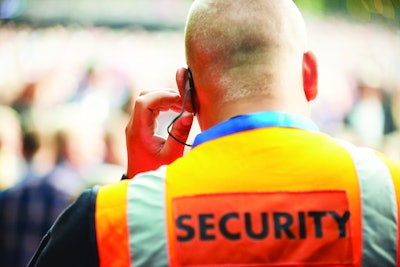 Law enforcement can help event organizers by teaching them what to do during an active shooting. Photo: Getty Images
Law enforcement can help event organizers by teaching them what to do during an active shooting. Photo: Getty Images
"The usual response that we are all taught is to run, hide, fight. If you can run away from the shooter, do it, because it's by far the best choice," Adelman says. "If you can't run away, hide behind whatever is available, and if neither of these is an option, fight the shooter with whatever you have. Throw your coffee cup, your phone, a book. These are the rules; the problem is they are hard. There are many impediments to people running, hiding, or fighting, particularly in live event spaces."
The first problem is that most people cannot identify gunfire. "They have never heard it live," says Adelman. "Even people who go to a shooting range haven't heard it without hearing protection. So, hearing live fire, close, is something most people have never heard in their lives. Therefore, you often hear from survivors of active shooter situations that they thought it was fireworks or pyrotechnics on the stage. This means people will have some delay in recognizing gunfire as a live threat."
The second problem, as was the case in the Las Vegas shooting, is people are unable to identify where the shots are coming from. "Run, hide, fight is based on knowing where the shooting is coming from and knowing what direction to run," he says. "But if people cannot figure out where the bullets are flying from, they don't know where to go, and if they do, they are then faced with something new and very frightening. And most people in those situations freeze up and don't do much of anything."
In addition, event goers' responses may be impaired by alcohol or drugs that affect or slow their decision-making process.
Here, law enforcement can help event organizers by teaching them what to do during an active shooting. This training should cover what an AR-15 sounds like by surprising them with recorded gunfire, says Adelman. "In the middle of my talks, I always play the AR-15 sound on automatic and semi-automatic," he says. "I do it over and over to fix it into their brains."
By training event organizers to recognize shots and where they come from, the casualties of such an event might be minimized. They will be able to quickly identify that a shooting is occurring and move people to safety.
Many event organizers also design apps to help people navigate and enjoy the festivities. These apps can also be equipped to deliver emergency messages to patrons, and Pearson says that these apps can notify people quickly about shots being fired and from where, and guide them to exit points.
"Event personnel need to be taught how to safely move people quickly and decisively toward a safe place. That's ordinary crowd management. There is nothing active shooter-specific about it," says Adelman. "But it's really important. We need to teach the people working these events how to be shepherds, by first explaining to them how people react in emergencies, giving them active shooter training, and then teaching them how to get people to safety."
Ronnie L. Garrett is a freelance writer based in Fort Atkinson, WI. She has written about law enforcement for 22 years, and has been writing about active shooter situations since the school shooting at Columbine in 1999.




